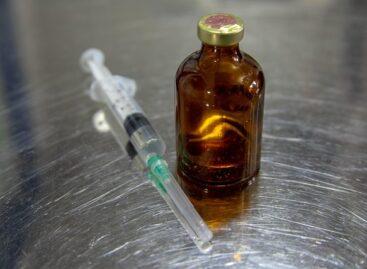MBH AgrárTrend Index: Cautious optimism characterizes the players in Hungarian agriculture
After a year of continuous decline, the value of the MBH AgrárTrend Index rose again in the first quarter of 2023. Due to the drop in energy and fodder prices, this year may well be the year of the livestock breeders, but in field crop production, which is the basis of Hungarian agriculture, very good weather conditions will be necessary to maintain profitability precisely because of the lower purchase prices – revealed from the summary of the industry’s analysts, which was prepared by interviewing the actors of the agrarian sector.summary of the industry’s analysts, which was prepared by interviewing the actors of the agrarian sector. According to the experts, although the decrease in retail consumption has an adverse effect on the turnover of the manufacturing industry, the high prices compensate for this. The slowdown in inflation and the reduction in energy prices can be a cause for optimism.

Csaba Héjja, MBH Bank’s senior agricultural analyst, Agri-Food Industry Analysis and Competence Center, Dávid Hollósi, managing director of MBH Bank’s Agricultural and Food Business Branch and Judit Pietsch, MBH Bank’s senior communications expert
“With the merger of MKB Bank and Takarékbank and the creation of MBH Bank, we have an even greater insight into the food industry, from the smallest primary producers to small, medium and large enterprises, to export-capable companies, the financing of which requires outstanding knowledge and stability. From the banking side, we have all of this available,” said Dávid Hollósi, managing director of MBH Bank’s Agricultural and Food Business. “We are at the beginning of a new era in the food industry, expertise, capital, and efficiency are needed,” he said, emphasizing that it is a sector of strategic importance and an area of increasing interest to people due to defining issues such as food prices. “In the case of agricultural customers, it is extremely important to offer them products and services that can help them adapt to the rapidly changing market environment and the new EU support period that is just starting. Regarding the latter, we will soon offer a newly available form of financing by factoring the subsidies submitted in the unified application, including the titles of the Agricultural Ecology Program.”
Improved confidence index
The value of the MBH AgrárTrend Index, an agri-food industry trust indicator that precedes official statistics and is prepared based on the situation assessment of customers, interprofessional organizations and the bank’s analysts, increased to 29.8 points on the 48-point scale in the first quarter of 2023. The current value represents an increase of 0.3 compared to the last quarter of last year, and a decrease of 0.3 points in an annual comparison. Compared to the previous quarter, the prospects improved in almost all sub-sectors, but primarily the position of the animal product lines strengthened. And although there is still no sub-sector that would reach the equilibrium level of 3-5 percent growth path and 35 points representing stable price and income conditions at all points, some product paths have come quite close to this.
A high average yield is required for profitability in field crop production
In the arable sectors that produce the largest output of Hungarian agriculture – wheat, corn, oil crops – the producers rely primarily on good weather. Although the price of fertilizer, for example, decreased and the significant growth of other cost elements stopped, sales prices fell to the level of the end of 2021 and the beginning of 2022, which requires a high average yield to offset. “The amount seen in the last 2-3 years will not be enough. From wheat and barley, instead of 5-6 tons per hectare, it is 6-7 tons that can generate some income after paying the costs,” pointed out senior agricultural analyst Csaba Héjja. As he said, the crop prospects for crops sown in autumn are also good in Hungary. “However, the drought period started around this time last year, so it is difficult to make predictions about corn and sunflower for the time being.” Regarding the import of grain from Ukraine, he added that it had a disruptive effect on the market, but a certain amount was definitely needed to maintain the operation of the processing industry. “As a result of the government’s decisions, imports from Ukraine have stopped for the time being, so the sale of Hungarian products in storage must begin. However, it may happen that some farmers can only sell their grain at a low price or at a loss.”
The income available to animal breeders may increase
According to experts, the situation of animal breeders seems to be more favorable for the time being. Feed prices, which peaked in the first quarter, began to decrease, currently it costs significantly less to raise animals, but sales prices have not fallen. “Therefore, it is foreseeable that there will be a shorter or longer period when animal breeders can earn a higher income. Even though the demand for animal products in the retail trade is decreasing, which is reflected in the data,” the experts pointed out.
Last year, three percent of producers in the dairy sector abandoned production at the national level, but this is the result of a natural process of concentration according to the bank’s analysts. In the case of dairy products, there is an increase in the supply, and as a result, a decrease in prices, but this is to a lesser extent in Hungary than elsewhere in Europe. The “price war” visible in the retail trade is expected to lead to a decrease in processing prices for some dairy products in the near future, they added. In the MBH AgrárTrend Index, in the first quarter of this year, the poultry meat product track performed best. The main reason for this is that broilers can still be sold for at least HUF 510 per kilogram, which ensures good profitability compared to feed prices. In addition, processors had an extremely good year in 2022. Domestic sales and exports, on the other hand, are showing stagnation and have even begun to decline.
They expect good sales opportunities in the grape and wine product line
Primarily, the prospects in the grape and wine subsector are favorable due to the revival of tourism. Energy costs contribute to this, and thus also the reduction of processing costs. The new vintages are now available at retail, and although prices have risen, they have not increased dramatically. There was typically no major frost damage in the orchards, so according to the experts, there will likely be no problems with this year’s crop. However, the production sector would definitely need a price increase, as they could not adequately enforce the increase in production costs. The weather experienced in the first months of the year had a beneficial effect on the cultivation of vegetables in the fields, a plentiful harvest is expected, and there is some increase in the price of vegetables. In addition, some of the vegetable growers were able to avoid the increase in energy costs thanks to the thermal wells. The good mood in this sub-sector therefore persists, although the fear of a decrease in consumption was also reflected in their assessment of the situation.
It is expected that the burden of grocery shopping will no longer increase
The processes currently visible in the product paths analyzed in the AgrárTrend Index will be felt later in store food prices, the experts pointed out. In relation to the development of food prices, it is currently seen that in the retail trade, mandatory sales may eventually replace the food price freeze. Thanks to this and the slowdown in inflation, it is believed that the burden of food shopping for households will no longer increase, and some types of food may even be cheaper, they added. The fact that the Hungarian inflation index is still higher than the EU average in an annual comparison is mainly due to the significant increase in the price level that took place last year. This was primarily due to export-import exposure, exchange rate effects, the rise in the price of energy and raw materials, but the high interest rate environment also played a role, which suddenly made financing more expensive for food industry companies.
Related news
Ministry of Agriculture: Cattle farmers to receive new targeted support
🎧 Hallgasd a cikket: Lejátszás Szünet Folytatás Leállítás Nyelv: Auto…
Read more >Hungarian farmers also participate in large numbers in the pan-European farmers’ demonstration in Brussels
🎧 Hallgasd a cikket: Lejátszás Szünet Folytatás Leállítás Nyelv: Auto…
Read more >The rate of submitted reports has not improved for antibiotic-containing preparations used in farm animals
🎧 Hallgasd a cikket: Lejátszás Szünet Folytatás Leállítás Nyelv: Auto…
Read more >Related news
(HU) Idei győztes sorrend: Grand Automotive East, Tesco Magyarország, Nestlé Hungária
🎧 Hallgasd a cikket: Lejátszás Szünet Folytatás Leállítás Nyelv: Auto…
Read more >Bagels, stuffed cabbage and online scams – this could be the Christmas menu for many due to the rise in cybercrime
🎧 Hallgasd a cikket: Lejátszás Szünet Folytatás Leállítás Nyelv: Auto…
Read more >25,000 packages of donations will reach people in need as a result of the 2025 Joy of Giving! fundraising campaign
🎧 Hallgasd a cikket: Lejátszás Szünet Folytatás Leállítás Nyelv: Auto…
Read more >






